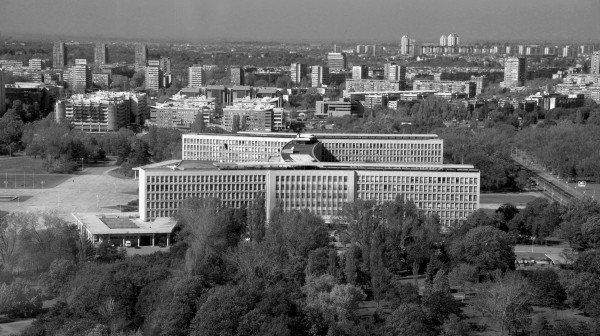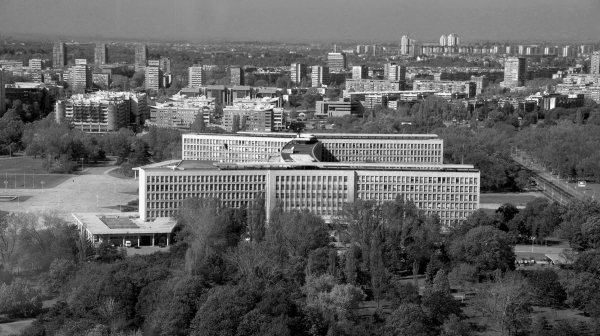Socialist Modernism in Serbia
The architectural image of titoism
Text: Éva Lovra

The official art of Yugoslavia in the latter half of the 20th century blended the neutral quality of late-Modernism reaching far beyond politics with a strong ideology of power which was matched and went hand in hand with the simultaneous evolution of Yugoslavism and and Titoism. Tito’s break away from Stalin back in 1948 resulted in a culture policy targeted against Socialist Realism, and integrated contemporary western components to rediscover Modernism preceding the war with its unique use of materials, evolving architectural code in a variable way. It may be disputed whether it was 1948 or 1950, the conference in Dubrovnik changing the aesthetic approach of architecture there or maybe even 1956 when Hruschev delivered his famous speech that we can date back the origins and beginnings of Socialist Modernism to, but it is true that it had already been considered to be the official style of state art when it had not yet had an exact character or ideology either. The year 1948 was a milestone in history, society and culture in the history of Yugoslavism, which in turn did not only launch Titoism but also created an atmosphere which bore the need of the regime to monumentalism and thus Socialist Modernism too. On the whole, however, Socialist Realism failed to permeate Yugoslavian arts to the extent it did the cultures of other countries which were soon to evolve into single-party countries after 1945.






